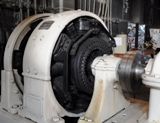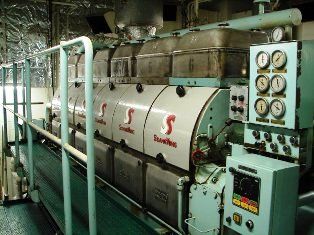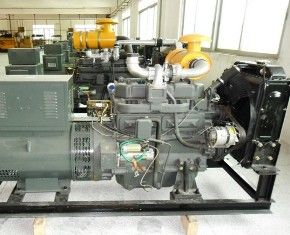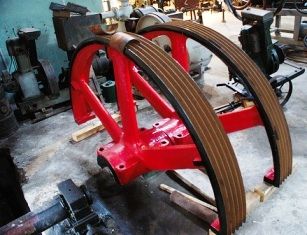Little energy
 The entire energy sector is divided into large and low-power facilities that operate thanks to traditional and non-standard fuels. According to the regulatory documents, there is no clear definition of "small energy". Very often, however, small plants include plants with a capacity not exceeding 30 MW and units with a unit capacity of not more than 10 MW. Typically, such stations are of three subclasses:
The entire energy sector is divided into large and low-power facilities that operate thanks to traditional and non-standard fuels. According to the regulatory documents, there is no clear definition of "small energy". Very often, however, small plants include plants with a capacity not exceeding 30 MW and units with a unit capacity of not more than 10 MW. Typically, such stations are of three subclasses:
• Micro power plants — power no more than 100 kW;
• Mini power plants — power 100 kW -1 MW;
• Small - power not less than 1 MW.
Thanks to small-scale energy, it becomes possible when the user no longer depends on the centralized energy supply, as well as on his condition. It can use other more optimal options for energy production sources. In addition to the term «small energy» there are other concepts, for example «distributed energy».
Distributed electricity represents a certain system for organizing the heat or electricity supply of the region.This is the scale of the power of the devices, which can potentially be used as sources of generation in facilities scattered throughout the region, they will also work in a common system. Thus, a distributed network of stations appears in the region. It turns out that small and distributed energy are synonymous.

A little energy development
As a result of the deterioration of the main equipment in power plants and electrical networks, as well as the shortage of electricity in industrial areas, the number and duration of interruptions in the supply of electricity from the centralized system are significantly increasing. That is why many enterprises and institutions, both public and private, suffer great political and financial losses. In turn, such users begin to solve this problem themselves.
Among the significant reasons why consumers decide to build their own autonomous power plant, the following can be mentioned:
1. Thermal or electrical energy supplied from its own source has a low cost compared to the cost of energy from other sources.
2. The funds spent on the construction of an autonomous station are commensurate with the damage caused by an interruption in the supply of electricity, the duration of which is at least 2 hours. For other businesses, the cost may be commensurate with the damage from an outage lasting 15-20 minutes.
3. The total capital costs associated with the fulfillment of the conditions for connection to the centralized system, for most enterprises, can be significantly higher than the construction of their own energy source.
4.The reliability of the autonomous station is several times higher than the reliability of the centralized system, especially if parallel operation of the autonomous station with an external system is envisaged.
5. Due to the presence of its own plant, the enterprise has energy sovereignty, therefore it has economic independence from the energy market.
Taking into account all customer requirements regarding small-scale power generation and the constant increase in the number of customers who have decided to create their own autonomous thermal power plant, it is possible to identify the main directions of development of modern small-scale power generation.

Development of modern small energy:
1. Creation of sources of heat and electrical energy, which are based on gas-piston engines, the efficiency of which is equal to 45 percent.
2. Improvement of equipment for the cogeneration system, as a result of which indicators of its weight, size and costs are reduced, the efficiency index is increased and other technical characteristics are improved.
3. Production of an autonomous station in a block-modular form, based on the modules of factory maximum readiness, due to which the time for building stations is reduced to a minimum.
4. The emergence of maximum implementation of energy sources based on hydroelectric power plants for exploitation of river energy.
5. Improvement of energy sources by using combined power generation devices.
In the near future, small-scale distributed energy will use a wide range of equipment based on the development of the first four directions.These four areas require such a volume of investment that is completely within the capabilities of the leading companies operating in the modern small energy market. In addition, the fifth direction requires a fairly large amount of investment, which can only be allocated by leading foreign enterprises.

Small energy facilities
They can be located within the centralized power system and in an isolated area where there are no electrical networks. First of all, the facilities are located in those areas where it is convenient for enterprises to use their own generation. For example, these can be sites of small businesses, emergency services, etc.
In addition, distributed small-scale energy can represent sites where utilities announce load increases in the presence of a pre-existing energy deficit. And also where the power supply needs the creation of cogeneration units.
A characteristic feature of distributed power plants is the compactness of the generating units, while there is mobility of the systems. Most of the installations run on gas and diesel fuel. Consumers receive electricity from mobile or stationary power plants. The small power plant has an average power of 340 kW.
Thanks to the development of small-scale energy, the stability, the efficiency of the functioning of the energy, the limitation of the growth of the electricity prices and therefore the better satisfaction of the needs of the consumers are increased.To develop successfully and compete with large energy companies, small distributed energy needs new legislative solutions, improved project financing and other measures.
